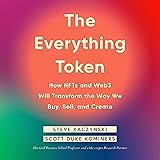Mastering the Crypto Markets: Your Guide to Day Trading Altcoins for Daily Profit
A staggering 1.1 million views on a previous video exploring daily crypto profits highlights a universal interest: how to effectively make $100 a day trading cryptocurrency as a beginner. While the market has evolved significantly since then, with countless new altcoins entering the fray, the core desire to turn short-term market movements into consistent earnings remains. This updated guide builds upon the strategies discussed in the video above, offering refreshed insights and better techniques to help you navigate today’s dynamic digital asset landscape and potentially achieve your daily trading goals.
As the crypto market continues its rapid expansion, it presents both immense opportunity and complex challenges. Identifying promising altcoins, understanding market sentiment, and executing timely trades are crucial skills. This post dives deeper into practical methods, leveraging popular tools like CoinMarketCap, CryptoBubbles, Binance, and TradingView, to help you pinpoint high-potential assets and apply robust technical analysis for profitable day trading outcomes.
Unearthing Trading Opportunities on CoinMarketCap
Your journey to make $100 a day trading cryptocurrency often begins with diligent market research. CoinMarketCap serves as an indispensable dashboard, aggregating vast amounts of data on virtually every cryptocurrency available. It’s a powerful platform for monitoring prices, tracking your portfolio, and gauging the overall health of the market.
Identifying Potential Buys: Beyond the Hype
While CoinMarketCap provides a comprehensive overview, its sorting and filtering functions are where real trading opportunities emerge. A particularly effective strategy involves sorting coins by their performance over the last 24 hours or seven days. The speaker in the video points out that identifying coins significantly down on the seven-day chart can reveal potential buying opportunities.
For instance, imagine encountering an altcoin like Kusama (KSM) that has seen a substantial decline, perhaps down 42% over seven days, as mentioned in the video. Such a dip, especially in a fundamentally strong asset with a significant market cap like Polkadot (ranked #9 at the time of filming) or Neo, suggests it might be oversold, presenting an attractive entry point for a rebound. This approach focuses on ‘buying the dip’ in quality projects rather than chasing volatile ‘shitcoins.’
Assessing Market Cap and Volume
Before committing to any trade, two critical metrics to scrutinize are market capitalization and trading volume. Market cap gives you an idea of the asset’s overall size and stability. High market caps usually correlate with more established projects, reducing the risk of extreme volatility or illiquidity.
Trading volume, typically expressed in USD, indicates how much of an asset has been traded over a specific period. The speaker advises looking for altcoins with “at least around 30 to 50 million” in daily volume. High volume ensures that you can easily enter and exit trades without significant price slippage, especially when dealing with larger positions. Conversely, a coin with extremely low volume, like the ~4 million example mentioned in the transcript, could trap you if you make a substantial profit, making it difficult to sell without impacting the price.
Visualizing Market Trends with CryptoBubbles
For a more dynamic and visually engaging way to spot trends, CryptoBubbles.net offers an excellent complementary tool. This platform displays cryptocurrencies as bubbles, with their size representing market cap and color indicating price movement (green for gains, red for losses). It provides a quick, intuitive snapshot of the market’s pulse over various timeframes—hourly, daily, weekly, or monthly.
During volatile periods, like the “fairly rough week” described in the video where many altcoins were down 20% or more (e.g., Theta down 25%, Link down 15%, KSM down 42%), CryptoBubbles visually highlights these downturns, making it easier to identify assets that might be ripe for a bounce. This visual aid simplifies the initial screening process, allowing traders to quickly narrow down their focus to potential candidates for day trading.
Executing Your Trades: Choosing the Right Exchange
Once you’ve identified an altcoin with strong potential, the next step is to execute your trade on a reliable cryptocurrency exchange. The video highlights several top-tier platforms, including Binance, Bybit, and Phemex. These exchanges offer robust trading interfaces, high liquidity, and a wide selection of trading pairs, often including USDT (Tether) pairings, which are popular for stable and efficient trading.
For instance, if CoinMarketCap shows Kusama (KSM) has its highest trading volume on Binance with a KSM/USDT pairing, that’s where you’d likely want to place your trade. Familiarize yourself with the exchange’s advanced trading view, which typically offers real-time charts, order books, and various order types (market, limit, stop-limit) essential for day trading. Many of these platforms also offer sign-up bonuses, such as Bybit’s approximately $1,600 bonus or Phemex’s around $200 bonus, which can be a nice boost to your initial capital.
Advanced Charting with TradingView: The Technical Edge
To truly make $100 a day trading cryptocurrency, you need more than just market data; you need technical analysis. TradingView is the industry standard for charting, providing a comprehensive suite of tools and indicators. While the video uses Bitcoin at $33,000 as an initial example, the focus quickly shifts to applying these tools to altcoins like KSM.
When analyzing a chart, starting with the four-hour timeframe is often ideal for day trading, as it balances granular detail with broader market context. This timeframe provides enough information for intraday movements without being overly noisy like shorter timeframes, nor too slow like daily charts for quick entries and exits.
Combining Bollinger Bands and RSI for Optimal Entries
The speaker champions a powerful two-indicator strategy for identifying high-probability trade setups: Bollinger Bands and the Relative Strength Index (RSI).
Bollinger Bands (BB)
Bollinger Bands consist of a simple moving average (the middle line) and two standard deviation lines (upper and lower bands) that expand and contract with volatility. The core principle is that price tends to revert to the mean, bouncing between the upper and lower bands. When the price touches the lower band, it suggests the asset might be oversold and due for a bounce upwards.
Relative Strength Index (RSI)
The RSI is a momentum oscillator that measures the speed and change of price movements. It ranges from 0 to 100. Traditionally, an RSI reading below 30 indicates an oversold condition, suggesting the asset might be undervalued and could soon see upward price correction. Conversely, an RSI above 70 signals an overbought condition, hinting at a potential downward reversal.
Executing the Dual-Indicator Strategy
The synergy between these two indicators is key. A strong buy signal emerges when two conditions are met simultaneously:
- The price candlesticks touch or break below the lower Bollinger Band.
- The RSI indicator drops below the 30-level, signifying an oversold market.
Imagine if you had applied this strategy to a past scenario, as shown in the video. You might have seen the price of an altcoin dip to the lower Bollinger Band while its RSI plummeted below 30. This confluence of signals would have presented a compelling entry point. While an extraordinary example showed a 72% profit in one day, more realistic gains of 2-5% or even 15% within 8 hours, as demonstrated with KSM, are common targets for day traders aiming to consistently make $100 a day trading cryptocurrency.
Profit Taking: Knowing When to Exit
Just as crucial as entering a trade is knowing when to exit. For day trading, the goal is quick, consistent profits. The video suggests two primary exit strategies:
- Selling at the Median Bollinger Band: This is a conservative approach, especially when the Bollinger Bands are widely stretched, indicating high volatility. Taking 50% or even 100% profit at the median line can secure gains quickly.
- Selling at the Upper Bollinger Band: This aims for maximum profit within the day’s timeframe. However, it carries more risk as the price might not always reach the upper band before reversing.
The key is to set a profit target, perhaps 2-5%, and stick to it. Not every trade will be a winner; some days you might make 20%, others you might lose 3-4%. The goal is to average out your profits to reach your daily target with enough capital.
Day Trading vs. Swing Trading: Understanding Your Horizon
While the focus here is on how to make $100 a day trading cryptocurrency, which implies short-term, intraday movements, it’s worth noting the distinction with swing trading. Swing trading involves holding trades for a longer duration—days or weeks—to capture larger price swings. The same technical analysis tools can be applied to higher timeframes (e.g., daily charts) for swing trading, but the holding period and profit targets differ significantly.
For beginners aiming for consistent daily income, sticking to the four-hour chart and focusing on quick entries and exits within a single day is a more suitable approach. This requires constant monitoring and decisive action, but it aligns perfectly with the objective of generating daily profits.







